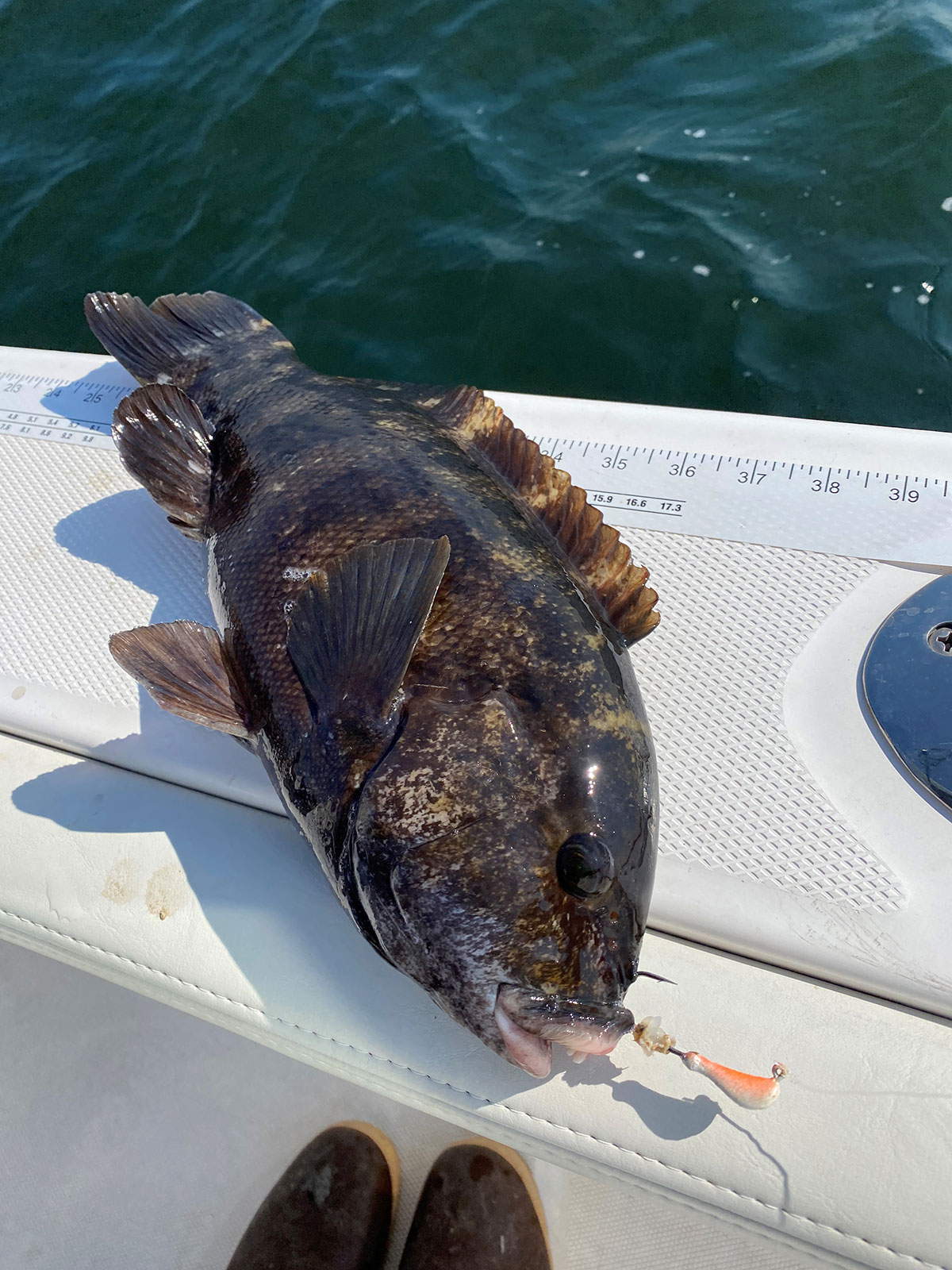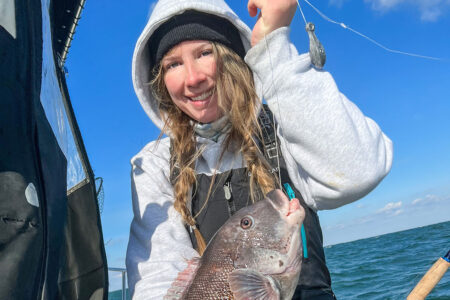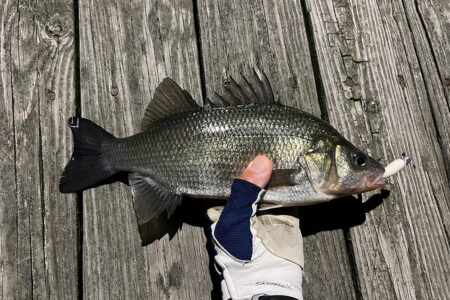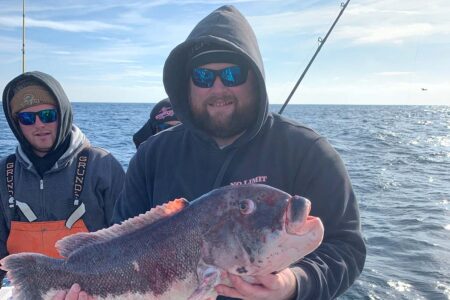
Here are the “menu specials” for the early togging season.
With the spring tautog season now upon us, anglers along the Northeast coast are gearing up for one for the first seasons to open for the year. Success in these waters, especially during the cooler early season, heavily relies on choosing the right bait. Tautog, known for their picky appetite, require a strategic approach to bait selection that can make or break a day of fishing.
Tautog, with their powerful jaws and keen sense of smell, are bottom feeders that prefer a diet consisting of crustaceans, mollusks, and, to a lesser extent, small fish. Early in the season, their diet primarily includes crabs and worms, which are more abundant. This natural preference plays a critical role in selecting the most effective baits to attract these wary fish.
Here are the specials for the early togging menu:
Green Crabs: A top choice for early season tautog, green crabs must be prepared properly. Cutting them into halves or quarters and hooking them through the leg sockets ensure a strong hold and ample scent release. Their hardiness makes them excellent for cooler water temperatures prevalent during the early season.
Asian Crabs: Smaller than green crabs but equally effective, Asian crabs are often used whole. Their size and soft shell make them particularly appealing to tautog, especially in heavily fished areas where a more subtle bait might be the key to success. These baits grab the interest of some large tog at times.
Sandworms and Bloodworms: While not the first choice for many, worms can be effective, especially in early spring when tautog are less aggressive. They can be used in combination with crab baits to add variety and increase your chances.
Clams and Mussels: Often overlooked, clams and mussels can be effective, especially when tautog are feeding on softer prey. They can be used whole or in strips and are best presented on a hook in a way that mimics their natural state.
Artificial Baits: While most anglers prefer natural baits, some artificial options can mimic the look and scent of tautog favorites. These can be a good backup, especially in areas where live bait is hard to come by. Some bait options are the Fishbites EZ Strips and the Savage Gear Duratech Crab.
Effective rigging is as crucial as the bait itself. Tautog rigs typically consist of a sinker, a leader, and a hook. The goal is to keep the bait near the bottom, right where these fish feed. Techniques vary, but the common theme is presenting the bait in a natural, enticing manner, mimicking the movements and positioning of the tautog’s natural prey. Most like to keep the bait still and let the natural current swing the bait around, near the bottom.
You can also opt out of the rig for the use of a small tog jig during the early season. Use the weight that gets you down to the bottom and will hold you there so that the fish can get a good look at what you’re offering them.
Selecting the right bait is a blend of what the tog prefers on a particular day, experience, and sometimes, a bit of luck. Early season tautog fishing challenges anglers to understand the nuances of the tautog’s diet and adapt their strategies accordingly. By experimenting with different baits and presentation techniques, and practicing sustainable fishing, anglers can enjoy the thrill of the catch while conserving the resource for future generations. So, gear up, choose your baits wisely, and get ready for the rewarding challenge of early season tautog fishing.
Check your state’s spring blackfish regulations by visiting www.thefisherman.com/marine-regulations.




